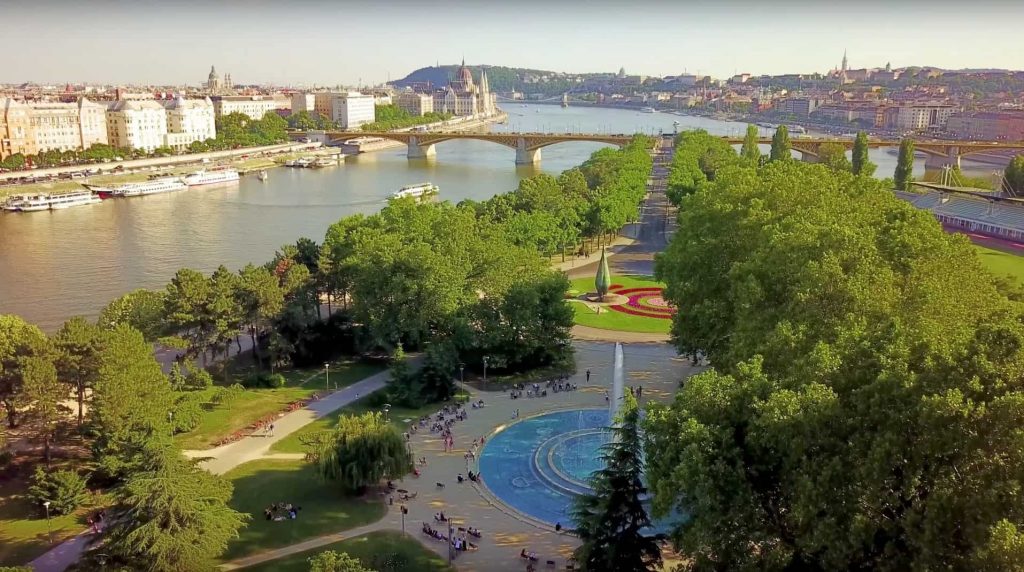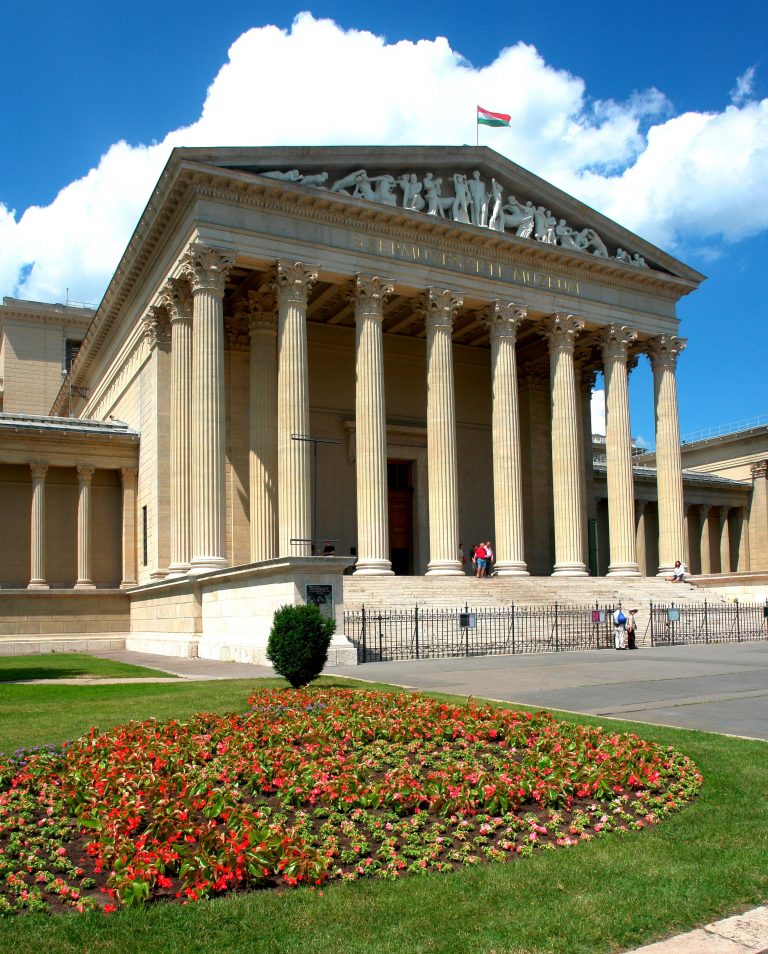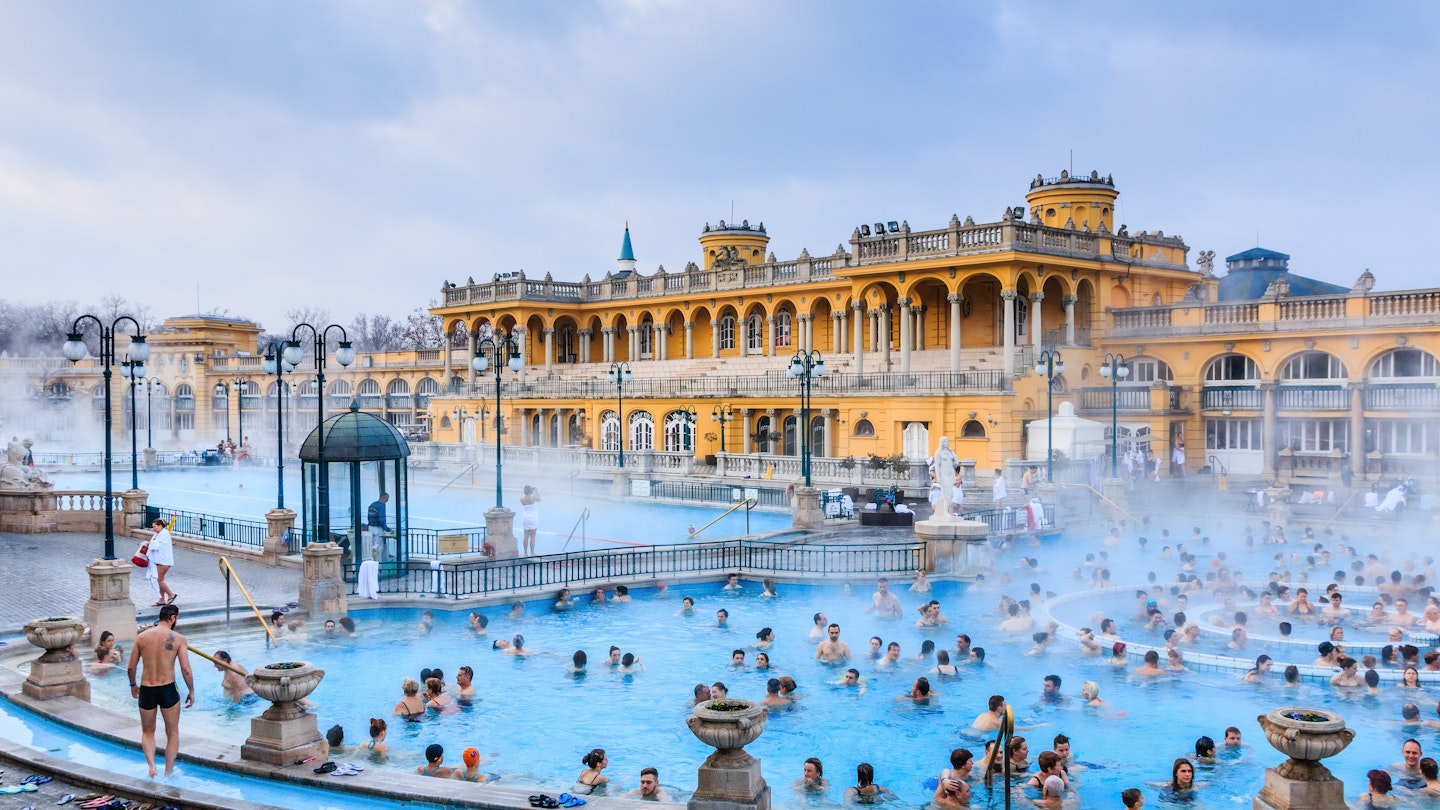
Diğer Gezi Planları
Route
Tag 121.03.2025Freitag

Buda Castle Funicular

Castle Hill
/filters:format(webp)/post/buda-kalesi-1-220329-175903-6767.jpg)
Buda Castle
Built to protect the stronghold from Mongol and Tartar attacks! Although badly damaged in World War II, much of the exterior has been restored, along with sections of the interior, which now houses a number of important museums. These include the Hungarian National Gallery in the main wing, while in the south wing, the Budapest History Museum occupies four floors. In front of the castle, overlooking the Danube, stands a bronze equestrian statue of Prince Eugene of Savoy, a hero of Turkish attacks on the city. Castle Hill is worth exploring for its medieval lanes and it Romanesque, Gothic, and Baroque architecture. This entire historic complex is a UNESCO World Heritage Site.

Hungarian National Museum
History museum containing cultural artifacts & archaeological items, documents, coins & paintings.

Leo Rooftop Budapest
Polished venue with city & river views serving burgers, fish, pasta & desserts, plus cocktails.

Fisherman's Bastion
A magical beauty! Overlooking the Danube, on the spot where the city's fishermen's guild built their defence walls in the Middle Ages, stands the impressive Fisherman's Bastion. This exquisite collection of Neo-Romanesque towers, courtyards, colonnades, and walls was built between 1895 and 1902, and is one of the most popular points in the city for tourists, largely for its spectacular views over the city and the Danube. While here, be sure to look for the bronze equestrian statue of St. Stephen, the first King of Hungary, in the south courtyard. The reliefs on the sides of the base depict scenes from Stephen's life, and make for an incredible selfie backdrop.

Matthias Church
The Church of Our Lady! It is a prominent landmark on Castle Hill. It was completed in 1269, and its magnificent south doorway with its relief depicting the Death of Mary was added in the 1300s. During the Turkish occupation of 1541-1699, the church was used as a mosque, and was later renovated in the Baroque style. It has been the scene of several historic events, including the coronation of King Charles I of Hungary in 1309 and the coronation of Emperor Franz Joseph I of Austria and his consort Elisabeth as rulers of Hungary. It was for this event that Franz Liszt composed his coronation mass.

Citadel Lookout

Gellert Hill Waterfall

Gellért Hill
235-meter block of dolomite that falls steeply down to the Danube! It's here along the hill's geological fault line that several of the city's most famous medicinal springs emerge to supply the Gellért Spa and Rudas Baths, which have lured visitors from far and wide since the 13th century.

Central Market Hall
Smell of local foods! You can't miss it for its central location and its roof of colorful Zsolnay tiles from the town of Pécs. Built in 1897 and the largest and oldest of Budapest's many markets, it's as interesting to view from the inside as it is on the outside – particularly if you enjoy people watching. As cavernous as any major rail terminal in Europe, this popular indoor marketplace encompasses an area of over 10,000 square meters and is as popular with the locals as it is with tourists, here for the abundance of fresh produce, food stuffs, and other goods being traded across its many levels.

Váci Fashion Street Apartment
12 Setzt
Tag 222.03.2025Samstag

Opera Café Budapest

House of Terror Museum
Museum documenting the effect of the Nazi and Soviet regimes in Hungary, and memorial to victims.

New York Café
Ornate cafe/restaurant since 1894 with frescoes & chandeliers, for coffee, cake & Hungarian cuisine.

Dohány Street Synagogue
Ornate domes top this lavish Moorish-style synagogue, with a museum, cemetery & Holocaust memorial.

Párisi Passage Restaurant
St. Stephen's Basilica
Popular attraction for its impressive architecture! The cathedral is dedicated to St. Stephen, Hungary's holy king and the founder of the Hungarian state, and construction began in 1851, but after several construction setbacks—including the collapse of its unfinished dome—it was not dedicated until 1905. The roof, towers, and external walls were badly damaged in World War II, and the church's precious mosaics fell from the walls. The cathedral's most precious holy relic, the mummified right hand of the church's patron saint, the first king of Hungary, is displayed under glass in the chapel to the left of the high altar.

Shoes on the Danube Bank
A reminder of Nazi suffering! It consists of a series of 60 pairs of steel sculpted shoes memorializing Jews shot here by the Nazis, and is a poignant and moving reminder of the Nazi atrocities suffered by Hungary in World War II.

Hungarian Parliament Building
The world's third largest parliament building! This Neo-Gothic building was inaugurated in 1886 to mark the country's 1,000th anniversary. (Hungary was then part of the Austro-Hungarian Empire.) This impressive structure boasts 691 rooms, as well as an impressive 19 kilometers of corridors and stairs. Guided tours last approximately 45 minutes and are available whenever the government is not sitting, and include many of the building's highlights, such as the main entrance hall, various lobbies, and the Hungarian Crown Jewels. Most tickets sell out a week in advance, so make your reservations as early as possible.

Gül Baba’s Tomb and Rosegarden
Octagonal 16th-century Ottoman tomb, restored as national monument, plus surrounding grounds.

Partisan Café Artisanal
Restoran

Margaret Island Water Tower
This 57-meter-tall structure built in 1911 has a staircase leading to panoramic views at the top.

Margaret Island
Main recreation and recuperative center for locals! Thermal spring-fed medicinal baths, carefully tended gardens and paths, as well as the ruins of many historic buildings also serve to attract many tourists, too. A highlight of any visit is the Palatinus Baths, a huge spa complex that covers more than 17 acres and includes a bath with artificial waves, together with various medicinal, swimming, and children's pools capable of accommodating up to 20,000 bathers at a time.
12 Setzt
Tag 323.03.2025Sonntag

Heroes' Square
The memory of Magyar Prince! The impressive Heroes' Square was largely the work of architect Albert Schickedanz, who was also responsible for the huge Museum of Fine Arts that flanks this large open space. Highlights include the Millennium Monument, a 36-meter column crowned by a figure of the Archangel Gabriel and unveiled in the late 19th century. Around the plinth can be seen a group of bronze horsemen representing the conquering Magyar Prince Árpád and six of his fellow warriors. On either side of the column, colonnades extend in a semi-circle, and between the individual pillars stand statues of Hungarian rulers. Above the corner pillars are beautiful works in bronze by Zala.

Kunsthalle der Hypo-Kulturstiftung
Museum with changing themed exhibitions of classic, modern & decorative art, design & photography.

The Museum of Fine Arts
It houses one of the largest collections of works by the Old Masters to be found in Europe. The extensive array of Italian, Spanish, and Dutch paintings are on display in a spectacular, classically influenced 19th century building with long rooms for the larger paintings, cabinets for smaller and more intimate items, together with architecturally interesting space such as the Renaissance Hall. Established in 1870 after Hungary inherited a fine collection of paintings, drawings, and prints, the museum is divided into six excellent departments: Egyptian Art, Ancient Art, the Old Sculpture Gallery, the Old Painter Gallery, the Modern Collection, and the Graphics Collection.
Széchenyi Thermal Bath
Ornate thermal baths, built in 1913, with a cupola, massivve swimming pools & water jet massagers.

Vajdahunyad Castle
This 1896 lakeside castle shows the evolution of Hungarian architecture in its elaborate design.

Szimplakerti Háztáji Piac

Gozsdu Court Budapest
Upscale apartments in a modern hotel with free Wi-Fi, plus an indoor pool, a gym & saunas.

Andrássy Boulevard Apartment

Museum of Ethnography
Huge collection of items about life in Hungary & the east of Europe in the 19th & 20th centuries.

Irgalmasok Veli Bej Bath
One of the oldest thermal baths in Budapest, restored & also featuring steam rooms.

Széchenyi Thermal Bath
The most famous thermal place in the world! Budapest is well-known worldwide for its incredible thermal springs, many of which have been harnessed to provide citizens, as well as visiting tourists, the opportunity to relax and rejuvenate in thermal baths. Of the many such attractions Budapest, the best known is Széchenyi Thermal Bath (Széchenyi gyógyfürdo). Established in 1913, it's supplied by two thermal springs; it's also the biggest such facility in Europe, capable of handling thousands of bathers at a time in its three outdoor pools (including an adventure pool that's great for families) and 15 indoor pools.
12 Setzt

